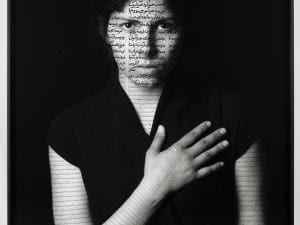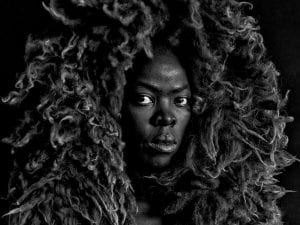In 1911, over one million people in Austria, Denmark, Germany and Switzerland came together to mark the first International Women’s Day. More than 100 years on, 8 March continues to be a moment to celebrate the remarkable contribution of women and girls to society and come together to demand more be done to achieve gender justice. In the art world, women have consistently pushed boundaries, broken down walls and pioneered techniques, but have been often overlooked and neglected in favour of their male counterparts. The dawn of the 1960s, and Second Wave feminism, saw the emergence of practitioners like Judy Chicago, whose installation The Dinner Party (1979) aimed to “end the ongoing cycle of omission in which women were written out of the historical record.” The triangular table was set with 39 places for mythical and significant figures, including Sojourner Truth, Eleanor of Aquitaine, Virginia Woolf and Susan B. Anthony.
A few years later, in 1985, the Guerrilla Girls formed in New York City. The anonymous group of feminist artists brought gender and racial inequality to the fore, using culture jamming in the form of posters, books, billboards, lectures, interviews and public appearances to expose disparities, discrimination and corruption. The first female Turner Prize winner didn’t come until Rachel Whiteread took home the award in 1993, and the first woman of colour, Lubaina Himid, won in 2017. Today, 13.7% of living artists represented by galleries in Europe and North American are women, and between 2008 and 2020, only 14.9% of exhibitions at 31 major US galleries were of work by female creatives. International Women’s Day is an annual reminder that we must do better. These exhibitions and events are an opportunity to explore the ever-pressing challenges that face women globally and acknowledge the brilliant art created by women, both throughout history and today.
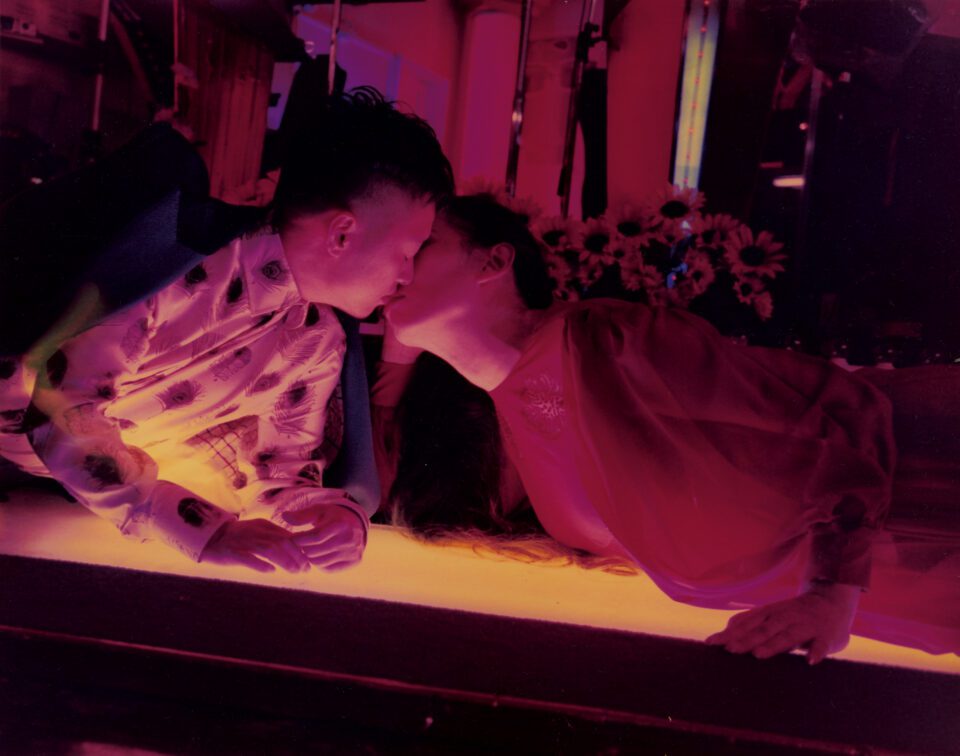
I’m So Happy You Are Here: Japanese Female Photographers from the 1950s to the Present
Fotomuseum Den Haag | Until 5 May
I’m So Happy You Are Here provides the first major platform for the work of 26 Japanese women photographers whose work offers a new perspective on the nation’s society and culture. These images are the world through the female lens. The artists on display use their personal experiences to question the role of women, gender and identity and critique patriarchal norms. Many of the photographers succeed in creating extraordinary images from seemingly unremarkable moments. Ushiado Tokuko translated the overwhelming period after the birth of her child by photographing household appliances, with the refrigerator representing an intimate glimpse into a private space. Others, including Yanagi Miwa and Okabe Momo, question long-held assumptions about the role of women in society, the home, family and workplace.
Royal Albert Hall, London | 8 March 2025
The Women of the World Foundation turns 15 this year. The organisation exists to build, convene and sustain a global movement that believes “a gender equal world is desirable, possible and urgently required.” WOW will celebrate with a rare UK performance from legendary activist Angela Davis. The American feminist, philosopher, academic and author has campaigned for gender equality, racial justice and prison reform for more than fifty years. The event will be held at the Royal Albert Hall, a venue intrinsically linked with the history of the suffragette movement and the site where some of the most memorable speeches and events took place in the fight for the vote. The evening is sure to be a powerful tribute to the incredible achievements of women, girls and non-binary people across the globe.
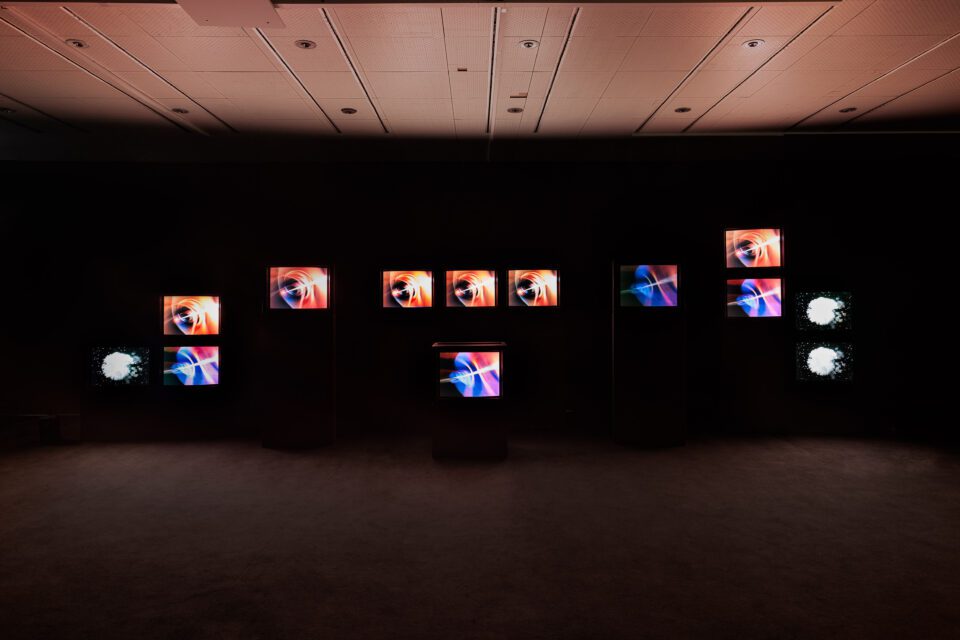
Radical Software: Women, Art & Computing 1960-1991
Kunsthalle Wien, Vienna | Until 25 May
This exhibition shines a light on the pioneering role of fifty women in digital art. It begins with works made in academic or industrial computer labs and ends with art made on the first personal computers in the last years before the World Wide Web made the internet publicly accessible. It features works by artists such as Alison Knowles, Lilian Lijn and Sonya Rapoport. The pieces included were created during a period that was also marked by the second wave of feminism and female artists, such as Judy Chicago and Barbara Kruger, were making waves around the world. Yet the contributions of women to digital art was, and remains, largely overlooked. Radical Software counters conventional narratives and places these history-making practitioners at the centre of conversations around art and technology.
Time for Women! Empowering Visions in 20 Years of the Max Mara Art Prize for Women
Palazzo Strozzi, Florence | 17 April – 31 August
The Max Mara Art Prize is one of the most significant awards dedicated to supporting female-identifying artists. Time for Women! is a new show marking its 20th anniversary. The display will present the works of nine former winners of the prize since its inception in 2005, paying tribute to two decades of innovation and creativity. Each winning creative is granted a six-month residency in Italy, during which they focus on research for a new project. This exhibition presents the result of these placements, which focus on themes such as identity, memory, the body, society and politics. Those featured include Margaret Salmon, whose moving-image works weave together realism and lyricism, and Emma Hart, who addresses questions of social class, familial behaviour and the connections between relatives.

National Museum of Women in the Arts, Washington DC | Until 10 August
In 1919, psychologist Sigmund Freud wrote a paper on the “Uncanny.” It is a term that describes the experience of seeing something that is strangely familiar, yet alien, which elicit a sense of anxiety. The concept has pervaded art, literature and popular culture ever since, from literary classics like The Strange Case of Dr Jekyll and Mr Hyde, to Jordan Peele’s recent horror film Us, which saw families stalked by their doubles. Now, a new exhibition surveys how female artists use the phenomenon to discuss feminist issues and subvert patriarchal traditions. The show includes iconic artists like Gillian Wearing, Justine Kurland, Mary Ellen Mark and Meret Oppenheim, who use the “uncanny” to regain agency, challenge traditional representations of women in art and probe feelings of revulsion, fear and discomfort.
Granary Square, London | Until 30 March
“Extraordinary ordinary” women are celebrated in a new outdoor exhibition in Granary Square. In one illustration, a woman expertly applies a full face of makeup on the tube. Another juggles three loads of laundry, prepares packed lunches and schedules a doctor’s appointment, all before 9am. Artist Hanna Benihoud shines a light on the unseen, unpaid and often thankless work that commonly falls upon female family members. She said: “During the summer of 2023, in America Ferrera’s monologue in the Barbie movie, she asked, “What about ordinary Barbie?”—a question that struck a collective nerve. There is something about the ‘ordinariness’ of womanhood that is actually quite magical. HighlightHer is a chance to celebrate the joy of “ordinary” daily lives, not just on International Women’s Day, but everyday.”
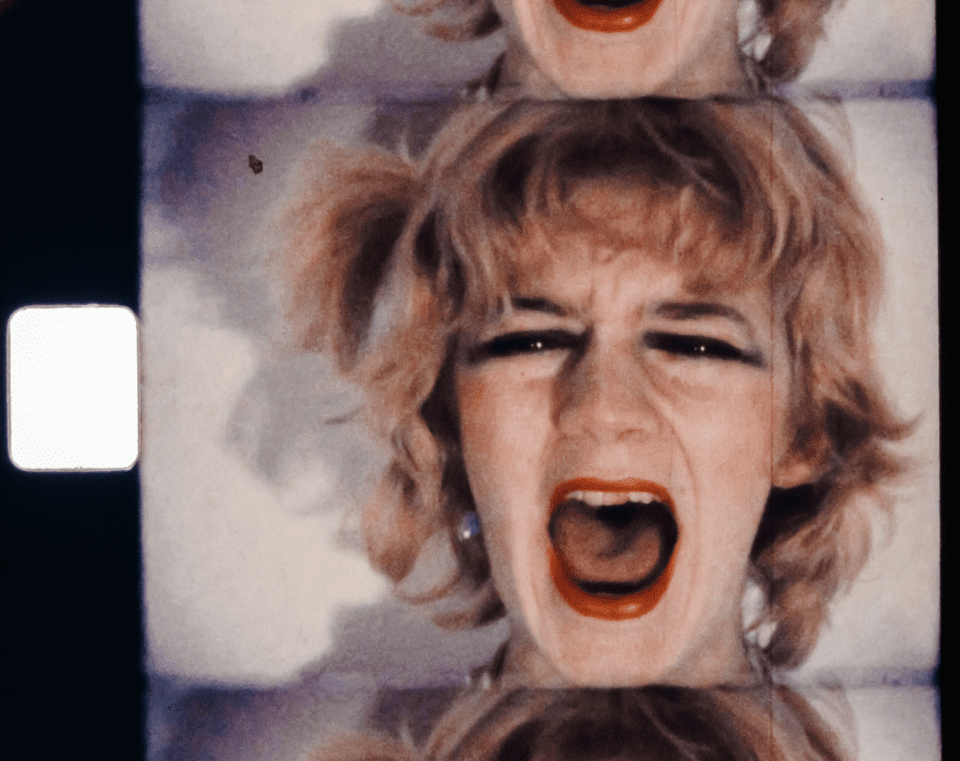
Women in Revolt!: Art and Activism in the UK 1970-1990
The Whitworth, Manchester | Until 1 June
The years between 1970 and the dawn of the 1990s were defined by seismic social, economic and political changes. The era saw second wave feminism ushered in, with the Women’s Liberation Movement prompting protests across the country. A backlash to Thatcherism meant punk music dominated the scene, whilst ‘Madchester’ saw the north become the centre of youth culture. Meanwhile, Section 28 and the AIDs epidemic came to define a generation’s call for LGBTQ+ civil rights. Now, Women in Revolt! showcases the powerful and provocative work of over 100 artists who explore a range of issues, from gender and race discrimination to domestic experiences. This timely survey celebrates the women whose work speaks to the power of art as a way to call for real social change.
Reframe and Rejoice: International Women’s Day Shorts Showcase
BFI Southbank, London | 7-9 March
The charity “Reclaim the Frame” champions marginalised perspectives in cinema. It was founded in 2005 as the Birds’ Eye View Film Festival, designed to run each International Women’s Day. Now, it offers year-round support by building audiences for projects by filmmakers of marginalised genders. The organisation returns to its original venue to celebrate 20 years with a special curated selection of shorts, followed by a conversation with the creators. The filmmakers explore nuanced and multifaceted experiences of womanhood, gender, identity and expression, from intimate mother-daughter relationships and to societal expectations of body image. The films will be accompanied by panel discussion on closing the distribution gap, helping to make a future of gender justice a reality.

Between These Folded Walls, Utopia
CODA, Apeldoorn | Until 18 May
Sarah Cooper and Nina Gorfer have collaborated on projects focused on women since 2006, working intimately with subjects to examine female relationships with identity, memory and migration. In their photography, women hold themselves in confident, defiant poses: bold gestures; stoic gazes, eyes fixed beyond the camera; enveloped in colourful clothing and decadent jewellery. They explain: “we’ve been playing with the male gaze through the female gaze.” The series Between These Folded Walls, Utopia portrays more than 20 women between the ages of 17 and 24 who were displaced and uprooted from their homes for various reasons. In a surreal, theatrical world, the women are portrayed as contemporary goddesses, forming an examination of what determines identity and sense of self-worth.
Various Locations, London
Croydon Council have announced a new art programme featuring exclusively commissioned pieces and craft workshops led by female practitioners. The month-long event brings to light shared experiences, forming connections between those living in the diverse borough. Multidisciplinary artist Aziza Kadryi hosts hands-on sessions which explore the Tumar, an ancient lucky charm from Central Asia. Meanwhile, Kinsi Abdulleh serves up a creative, cultural and communal experience that reveals rich traditions of African textiles and natural dyes. The Wendy Project, a leading visual arts commission by Holly Searle, will unite 100 tea towels embellished with powerful statements from women across Croydon. The traditional symbol of domesticity and “women’s work” becomes a safe space for self-expression.

Close Enough: New Perspectives from 13 Women Photographers of Magnum
Kunsthal Helmond | Until 23 March
“If your pictures aren’t good enough, you aren’t close enough.” These are the words of photojournalist and Magnum co-founder Robert Capa (1913-1954). The aptly titled Close Enough showcases a key series from 13 female Magnum photographers. Each selection captures a pivotal moment in the photographer’s career. The artists on display include Cristina de Middel, whose acclaimed body of work The Afronauts (2012) explored the history of a failed space program in Zambia in the 1960s. Also featured is Susan Meiselas, who began her extensive career with a photographic essay focused on the lives of women doing a striptease at New England’s country fairs, and Sabiha Çimen, whose series Hafiz portrays the world of Turkey’s single-sex Koran schools,. Each of the photographers demonstrates that getting close enough to your subject is indeed essential for a really good photo.
Mis(s)treated: More Than Your Muse!
Kunsthalle Bremen | Until 3 August
In 1971, American art historian Linda Nochlin asked: “Why were there no significant female artists?” She was one of the first to investigate how female artists were structurally discriminated against and excluded from exhibitions. Now, Kunsthalle Bremen turns attention to its own collection as part of a wider cultural rethinking of who is represented by institutions. More Than Your Muse! shows that women have always been active participants in the history of art. This is an opportunity to see feminist perspectives that have rarely appeared in the museum’s permanent exhibition before. The display shows how female artists have succeeded in conquering spaces since the 19th century, but have had to fight to emancipate themselves from male-dominated narratives. The works address topics including the body, identity, gender roles, care work and sexualised violence.
Image Credits:
1. Yanagi Miwa, Elevator Girl House 1F, 1997; from the series Elevator Girl. Courtesy the artist and Aperture.
2. Okabe Momo, untitled, 2020; from the series “Ilmatar”. Courtesy artist and Aperture.
3. Installation view Radical Software: Women, Art & Computing 1960–1991: Gretchen Bender, Dumping Core, 1984, Kunsthalle Wien 2025, Courtesy Sprüth Magers, photo: kunst-dokumentation.com.
4. Justine Kurland, Grassland Drifters, 2001; Chromogenic color print, 30 x 40 in.; National Museum of Women in the Arts, Gift of Heather and Tony Podesta Collection; © Justine Kurland, Courtesy of the artist Mitchell-Innes & Nash, New York.
5. Gina Birch, 3 Minute Scream copyright artist.
6. “Israa and the Pink Scarf,” 2020, from the series “Behind These Folded Walls, Utopia” © Cooper & Gorfer.
7. A plane files low over students riding a train at a funfair over the weekend. Istanbul, Turkey, 29 August 2018 © Sabiha Çimen/Magnum Photos.



